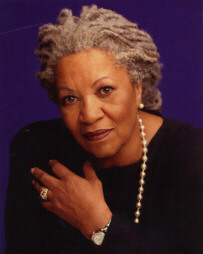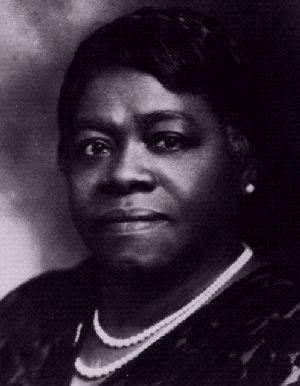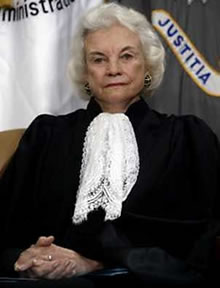 |
||||
|
Groundbreaking Women:
|
||||
|
|
||||
|
Results of the Inquiry
The women in this inquiry were already recognized by some outside entity for making an outstanding contribution to their field. Additionally, the researchers selected them as being the first in their field to do so, thus identifying them as ‘groundbreakers’. The following eleven traits emerged from the study of these twenty-one women: (a) resilient or courageous, (b) visionary (c) self-efficacious (d) making a difference (e) persistent (f) valuing education (g) passionate about their work (h) believing in family first (i) advocating for the underrepresented (j) intellectually advanced, (k) and recognized by society as role models. Examples from the lives of eleven of the twenty-one women are included in each of these eleven traits and their descriptions to illustrate how the traits emerged from their stories. Resilient or Courageous The women we researched demonstrated either courage in the face of threatening situations or resilience when confronted with hardships. These groundbreakers took the situations they found themselves in and used them as lessons to better themselves and make them stronger. Amelia Earhart, the first female to fly across the Atlantic Ocean solo, believed that “courage is the price life exacts for granting peace” (CMG, 2004, quote 7). Her resilience was noted by long-time friend and navigator, Fred Noonan, when he described her as “a great companion and pilot.... who could take hardship as well as a man and worked like one, too” (CMG, 2004, quote 19). Visionary Women groundbreakers described themselves as having a vision or dream of what they wanted to do, often for others. Able to see beyond the present circumstances, these women saw what was possible for themselves and others and drove themselves to achieve goals that would see their vision become reality. Marie Curie was a true visionary who believed in the potential of radiation’s curative power (Jones, 1998). Directing her efforts toward accomplishing a specific goal, she relentlessly pursued the scientific principles and discovered radium, created the study of radioactivity and opened a new field in physics. She was the first female to win a Nobel Prize and the only person to ever win two. Self-efficacious Women who were firsts demonstrated a sense of self-efficacy, a belief in their own power and ability to accomplish something, even when told they were not capable. Ruth Simmons, President of Smith College, is the first female to head a major university. As the last of twelve children, she came from a family of tenant farmers that barely made enough to live on by raising cotton. But Ruth believed in herself and her own abilities to accomplish great things. "The fact that there was definitely a really low ceiling for me didn't enter my mind," (NASA, 2004, para. 3). Had a mission to make a difference
While accomplishing amazing feats individually, these groundbreaking women were on a mission to make a difference for their profession and the lives of the people affected by their work. Toni Morrison, the first African American to receive the Nobel Prize for Literature, is recognized as a visionary poet who used the language of African American slaves to articulate the reality of American life for black people. Morrison proclaimed that her cause was about the restoration of the language that black people spoke to its original power, which was lost in the oral traditions of black slaves. Morrison’s novels include an ongoing exploration of color, gender and identity, earning her worldwide acclaim as one of the greatest living writers in the world (Felder, 2001). Her achievements are remarkable, not only for their contribution to American literature, but also for the author herself, because Morrison did not publish her first novel until she was thirty-nine years old. Persistent Our female groundbreakers exhibited a persistence to accomplish their missions even when facing obstacles such as physical illness, financial struggles, or prejudice with respect to gender and/or race. Cheryl Miller was the first female analyst to call a nationally televised National Basketball Association (NBA) game on Turner Broadcasting System (TBS). As a modern-day athlete and sports commentator, she ov ercame many gender and racial obstacles to become a prominent black woman athlete. She was thirteen years old when she tried out for an all-male basketball team. After beating her coach’s son in a one-on-one game as a condition for playing on the team, she asked the coach when she should report to practice. According to her story, the coach looked her straight in the eye and said, "Miller, the only court I'll see you in will be a court of law. No girl will ever play on my team” (Miller, 1995, p.162). She then ran home crying and told her dad that she was quitting and that she never wanted to play basketball again. He sat her straight up and said: "I didn't raise any quitters. Tomorrow you will try out for the girls’ team and become the best who ever played" (Miller, 1995, p. 162). Valued education
The groundbreaking women we studied were referenced as seeing education as a way to better themselves and help others succeed. Education was the vehicle to either transform their circumstances or to propel them towards their goals. This value was either implied through their advanced degrees or directly spoken of in their stories. Mary McLeod Bethune, the first African American to serve as a special advisor to Franklin Delano Roosevelt, is closely identified with education. She is primarily known as a prominent educator who greatly enhanced educational opportunities for African-American girls. “Her outstanding efforts on behalf of the black community at the national and governmental level further enhance her status as one of America’s most influential leaders and the most important African-American woman of her time” (Felder, 2001, p. 145). Passionate about their work Women groundbreakers from our study spoke of a passion for what they were doing, either as a career or as their life’s work. Generally speaking, they loved their work. Juanita Morris Kreps, the first woman to serve as the U.S. Secretary of Commerce and member of the Board of Directors of the U.S. Stock Exchange, loved her work. As an economist, teacher, dean of the women’s college at Duke University, and negotiator for the U.S.-Chinese trade agreement, her true passion was her research on the changing role of women in the labor force and its effect on the overall structure of society (Encyclopedia, 1999). Believed in family first
While maintaining a drive to accomplish their goals, these women would often pass up opportunities that may have put their families in jeopardy, thus delaying the accomplishment of their goals. It should be noted, however, that the families were often also the support upon which the individuals depended in order to make their great achievements. We saw this “family-first” philosophy when we studied Sandra Day O’Connor, the first female Supreme Court Justice, who set aside her career for four years to raise her three sons (Felder, 2001). Advocated for the underrepresented It was surprising that so many of the women groundbreakers were strong advocates for the rights of the underrepresented. Across generations, women voiced their concern for the status and treatment of women and other underrepresented populations, such as children and ethnic minorities. One of the strongest advocates from our study was Frances Perkins who founded the Social Security Act of 1935 and the Fair Labor Standards Act. These were two of the most powerful acts of legislation to ever come from any Secretary of Labor. Frances was described as being pragmatic with strong beliefs in the social welfare of others and a leader who demonstrated high moral convictions and commitment to the principles of law and morality (Pasachoff, 1999). Her advocacy for the underrepresented can be captured in this conversation with Franklin Delano Roosevelt, “Do you want these things done? [unemployment relief, public works, minimum wage, child labor laws, etc.] Because you don’t want me for Secretary of Labor if you don’t” (Pasachoff, 1999, p. 3). Intellectually advanced The women exhibiting this characteristic often graduated from high school and college far ahead of their peers. Linda Wachner was one of the first women to lead a Fortune 500 firm (Pearson, 2004). She was described as a diligent student, graduating from high school at 16, after which she moved to State University of New York in Buffalo and studied economics and business administration. She started out as a buyer working in a variety of apparel industry jobs. Within one year she became the first woman vice-president in the firm’s 100-year history (Pearson, 2004). Recognized by society as role models As we researched these female groundbreakers, we often found statements that recognized these women as role models for other women. Clearly accepted as the best in their field, these women were held up as what other women should work toward. Sally Ride, one of the most inspiring female groundbreakers in our study, was the first American woman to become an astronaut and travel into space. With a doctorate in physics from Stanford, she also developed her talent as a writer, publishing three children’s books describing her experiences in space. Serving as a member of the President’s Committee of Advisors on Science and Technology and formerly Director of the California Space Science Institute she has set the pace for generations of women. She offers both challenges and hope to the many women that will follow in her footsteps (NASA, 1999). Summary and Conclusions Our work with female groundbreakers to this point has led us to believe that women who are the first in their fields to achieve or accomplish a particular honor, position or task, do exhibit distinct traits and characteristics that support and promote their success as leaders in their fields. This inquiry resulted in the description of eleven common traits, viewed here as cumulative for the set of women groundbreakers in the study and described here through the stories of eleven of the twenty-one women from the study. While we were not able to find specific examples in the literature of all eleven traits for each of the twenty-one women, we felt that the lack of evidence may be a limitation of recorded history—not the women or the characteristics themselves. Through this inquiry, we were able to glean responses to the question “How can knowing the characteristics and achievements of these groundbreaking women, along with their inspirational stories, facilitate other women to become leaders?” The set of characteristics derived from this study of women groundbreakers has significant curricular implications for promoting and developing the critical leadership skills needed in educational leadership, especially for aspiring future and practicing female educators from diverse populations—doors, heretofore, closed. Incorporating the stories of these great women in leadership programs in education and other related fields can both inspire current and future leaders to address the challenges facing women in leadership and encourage women to pursue their dreams and achieve their goals. Studying a set of characteristics belonging to these female trailblazers can be the basis for professional development for female aspirants who wish to break the glass ceilings and enter uncharted territory leading to leadership roles. Leadership courses and professional development can facilitate the development of women as leaders through (a) inspiration, (b) development of character traits, (c) connections and networking, and (d) high expectations of achievement. Inspiration Knowing these women and hearing their stories can inspire other women to greatness which, in turn, will inspire others to succeed. For many women, just hearing the stories can inspire them to go beyond what they see as limitations, regarding their ethnicity, their financial situations, their educational background or their family circumstances. Women, in general, have not been the focus of historical, scientific, or cultural studies. They are not the authors, the politicians, the doctors, the scientists that are named among the ‘great men’ studied in school. Nor have women been brought to the forefront as major players in the cultural influences of entertainers, artists, film producers or poets. Studying female groundbreakers raises the level of awareness that there were and are many women who were the first to achieve an honor or to make a significant contribution, and in some cases, they were not just the first woman, but the first person to do so. By sharing these stories with other women, we can inspire them to think of themselves as leaders of men and women. They can become the best in their field, not just “as good as” the male heroes whom they have studied most of their lives but better. Development of the character traits and skills in professional development programs There is a need for current leadership programs to include both personal skill and character building in their programs. This may be done in a variety of ways, but some of the more popular are through professional development seminars, college and university coursework, and training centers. Programs currently exist that build leadership characteristics and skills in a variety of professions, such as found in the business leadership training programs at Thunderbird, the Garvin School of International Management, ranked Number One in International Business by the Wall Street Journal. In their program, they profess to develop “Leaders equipped to be creative, ethical, and visionary; Bold leaders, not afraid to take well-calculated risks; and Leaders taught to shatter through comfort zones, glass ceilings, and stereotypes; to be the stewards of the twenty-first century” (Thunderbird, 2004). Others who developed leadership characteristics include Babson College of Business whose Executive Education program is ranked by Financial Times as being among the top nine in the world for overall executive education, and by Business Week as being in the top ten for custom programs. (Babson, 2004). With a Master’s Degree in Business Administration, a program that has been ranked Number One in Entrepreneurship by U.S. News & World Report for eleven straight years, this university focused on pertinent topics for the student’s own personal and professional development. Educational institutions for public school leadership development who follow this same trend would go beyond teaching concepts and their application, to improving areas of personal development of each student, individually, based on their identified need and the characteristics identified as important in female groundbreakers. Connections and Networking An advantage that many men have had over women can often be found in the networking of top leaders with potential leaders. Linking women with other women who are recognized as groundbreakers in their field can be an avenue for success for many women who otherwise may not achieve their potential. Once these groundbreaking women are identified, networking links may occur through direct contact, discourse at conferences, or with the exchange of written communication in which ideas are shared and connections are made. Universities and professional development institutions may facilitate this networking by inviting these groundbreaking women to speak at conferences and to publish in their journals. In addition, established leaders in state and national organizations can facilitate networking through special interest groups and conferences within conferences. Setting high expectations for achievement
The study of women groundbreakers is like a circle that expands, and as the circle expands, so does the influence of these women to open doors for other women to be recognized for their work. The more discourse there is around women groundbreakers and the paths they chose to take, the greater the sense of normalcy regarding their actions—an expectation that ‘of course’ women need to be: courageous, visionary, driven by a mission and intellectually advanced, giving the message that is what great women are and do, and that is what is expected of you. Clearly all of eleven of the women we studied could be considered role models for future female leaders in that they exhibited many of the characteristics that we attribute with success. However, it was not clear from all the descriptions of the women that we were able to find, that they were recognized for such. A more in-depth study of female groundbreakers is needed, one that accesses information not currently available to the general public through popular reading and viewing. Much of the information about these women may only be found in specialized museums and private displays of writings and other artifacts of their work. Follow-up interviews with those women still living would no doubt provide first-hand data that would link the above and maybe even more traits to each female groundbreaker. Are you a female groundbreaker? Was your mother or grandmother one? Do you know a woman who has the potential to be the first to achieve an honor or make a significant contribution? We challenge everyone who works with these future groundbreakers to read and share the stories of: Amelia Earhart, Marie Curie, Ruth Simmons, Toni Morrison, Cheryl Miller, Mary McLeod Bethune, Juanita Morris Kreps, Sandra Day O’Connor, Frances Perkins, Linda Wachner, and Sally K. Ride, to name a few. Use their stories as inspiration for yourself and for the young women in your family, classroom or business who can and will some day be a groundbreaker. We encourage you to explore the lives of many other women who are recognized as groundbreakers.
References http://www3.babson.edu/see/sem_lip/default.cfm?utm_source=overture&utm_mediu m=ppc&utm_term=leadership+skill http://education.umn.edu/alum/link/2001fall/female.html http://www.ameliaearhart.com/about quotes/html). http://www.britannica.com/eb/article?tocId=9125835&query=Janowitz%2C%20Morris http://www.edweek.org/ew/ewstory.cfm?slug=11women.h19 http://www.questia.com http://quest.arc.nasa.gov/space/frontiers/chat_archives/ride03-23-99.html http://quest.arc.nasa.gov/women/TODTWD97/simmons.bio.html http://www.infoplease.com/ipa/A0776488.html. http://www.thunderbird.edu/students/index.htm
|
||||
 |
|
 |
||




